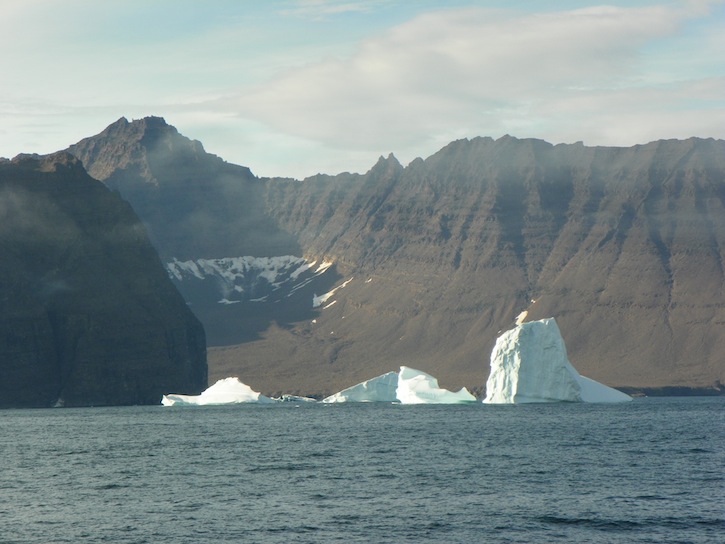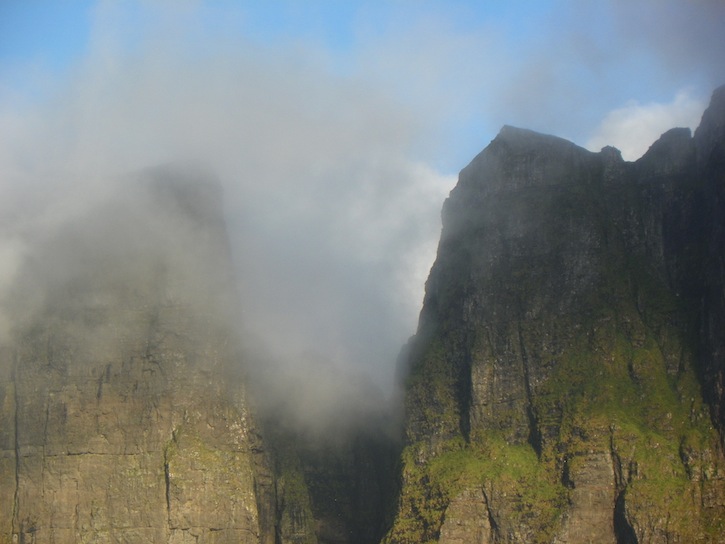Many thanks to Lynne Buscher’s 5th grade students at the Morse Pond School in Massachusetts, US for their questions, especially those that help us reflect on our experiences on the Knorr. Question 1: How old is the Knorr? How many miles will the Knorr have traveled this time? Answer: Dear Guys and Girls at Morse Pond, First off, thank you all for following our cruise to Iceland. As you have heard, it has been a very interesting cruise with all of the marine life, icebergs, heavy seas, and terrain of both Iceland and Greenland. I hope you all have enjoyed the pictures and learned a little about this part of the world and the science we are conducting. I received a couple questions from you guys which I will go on to answer. The KNORR is 44 years old. She was built in Michigan in 1967 and launched in 1968. In the early 1990’s the ship was cut completely in half to lengthen the ship by 33 feet, making it all of the 279 feet it is today. The ship has served all over the world in its lifetime. I have been lucky enough to serve on it the past 2 years as a Third Mate, driving the ship and taking care of certain aspects of the ship under the direction of the Captain. This trip on the KNORR we will have traveled just under 4,000 nautical miles. So far this year the ship has gone 27,000 nautical miles. In its lifetime the KNORR has gone over 1,000,000 nautical miles. In case you are not aware, I am from Falmouth. I also went to Morse Pond and the rest of the Falmouth Public Schools. When I was at Morse Pond it was just undergoing a major reconstruction. How do you like the school now? Do you still have the Turkey Trot? I would also like to say hello to all the teachers I had at the school as well as my cousin, whose name I will not mention, to save her the embarrassment. Enjoy the warm weather up there and take advantage of getting out on the water, whether it is going to the beach or out on a boat. Falmouth is a great place to grow up especially if you enjoy the ocean as I do. Thanks for following the trip and keep the questions coming. (There are photos of the Knorr taken during it’s lengthening in the last Happy Hollow Answers.) Answered by Mike Chretien, Third Mate, R/V Knorr
Four times a year the electric dewatering pump has to be tested. It would be used to pump water out of a flooded part of the ship using a fire hose. Here Mike holds the powerful hose after tying it to the rail. The crew uses seawater to check it out. © Pat Keoughan Question 2: How did hurricane Irene affect the Knorr voyage? Answer: Your question is answered in the King Philip School’s first question. Answered by Pat Keoughan, Outreach team
Question 3: Is there any weird food on the ship? Answer: Any food that is new to someone can seem strange. In the second set of Iceland answers I named the countries of crew members who weren’t born in the United States. The science party has members from Brazil, Norway, Iceland, Netherlands, Germany and the UK as well as the US. The stewards, (cooks on a ship) therefore, have made meals from many different countries, some of which may have dishes some of you might consider “weird”. I didn’t find any of it to be anything but delicious and healthy. There are always choices so you don’t have to take anything you don’t like. They also take good care of vegetarians and people with food allergies. They make all the bread and tasty desserts (like Snickers cake with Snickers bits in the icing) on board. In between meals there are all kinds of snacks. No one will ever go hungry on the Knorr. Answered by Pat Keoughan
Bobbi the Chief Stewart, India the Cook and Tony the Mess Man pose for a photo for the Email Exchange. All of us on the Knorr are lucky to have these people responsible for preparing our food. © Pat Keoughan
I hope these evening snacks don’t look weird to anyone. (I’m just trying to make you jealous.) © Pat Keoughan Question 4: How many kinds of birds have you seen? Animals? What is the favorite animal that you’ve seen? Answer: We have seen at least 12 different species of birds. Most of them have been pelagic, spending much of their lives on the open sea, like the fulmars. In the fjords we saw greater black back gulls, like you have at home and a greater cormorant, different from the double crested cormorants you are used to. One kind of land bird has been seen resting onboard two times, far from land, a northern wheatear. The other kinds of animals we’ve seen are whales, dolphins and jellies in the open ocean and seals in the fjords and sheep on the hills of the fjords. You can find out more about the wildlife we’ve enjoyed in the Netherlands answers, question 2 and its photos. I asked a few people about their favorite animal and the winner was the northern gannet, which was one of mine, tied with the kittiwakes. Others mentioned were the whales, seals, the huge jellyfish and our constant companions throughout this voyage, the northern fulmars. I have been scanning the ocean every day for my favorite animal, the Atlantic puffin. They are supposed to be hanging out in the North Atlantic but I can’t find them. The only puffin I’ve seen is on Bob Pickart’s sweatshirt. (Check out Rachel’s two bird slide shows on the website. The Bainbridge Island answers, question 2 has a photo of a gannet and other animals from the trip.) Answered by Pat Keoughan with help from shipmates
This jellyfish was below me just off the Knorr in the open ocean. It was about seven feet from its bell to the end of its tentacles. © Pat Keoughan
I wondered if this kittiwake thought the white life raft container was some sort of weird iceberg. He looks like he’s ready for a nap. © Pat Keoughan
Look closely and you’ll see that this gannet I photographed at sunset is spotted. It does not have its adult feathers yet. © Pat Keoughan Question 5: Did you learn anything you didn’t know? Answer: It is hard to be surrounded by science people and not be curious about what they are doing. I worked hard at the beginning to learn everything I could about the moorings, especially the instruments on them and what they measure. It’s been the same with the CTD’s. I ask a lot of questions and do a lot of observing of the scientists’ and techs’ work. I also listen a lot. My favorite meal experience is when I’m sitting with scientists and they are talking about what they are learning from the latest information they received. I know a lot more about currents in the ocean in general and the Iceland Sea particularly, now. I have a lot more to learn to really understand them. I do know they are very complicated and that’s a big part of why we are out here; even the scientists have more to learn about them and how they affect the climate of the North Atlantic. With all the seabirds we’ve seen, I’ve had my nose in Peterson’s Field Guide for Eastern Birds at least once a day. I thought the fulmars having their nostrils on their beaks was quite interesting. (See the first photo, question 2, Netherlands answers.) I also learned what the east coast of Greenland, several coastal areas of Iceland, and the Faroe Islands look like. They are amazing mountainous areas with fjords, waterfalls and snow on craggy peaks. I’d like to go back and visit them to find out more about them. (Ben and Bob Pickart are working on a video that should be up on the website in the next day or two about what the scientists have learned, during this cruise.) Answered by Pat Keoughan
Question 6: What has been your favorite highlight of the trip? Answer: For me, I’m not able to choose between two events. The first is the moment I was standing on the deck looking at my first iceberg when the mist lifted behind it and there were the barren mountains of the east coast of Greenland towering above us with a glacier flowing to the sea. The second was witnessing the magical late afternoon scenes of the Faroe Islands as we left them, sailing along a coastline of strangely shaped, huge rock formations eroded by the sea, with steep cliffs above them, and mist swirling on the tops. Stine, CTD watch stander from Norway and Ben, our videographer agree that leaving the Faroes was a highlight for them. (There are several places on our website where you can see some of the amazing scenery from both Greenland and the Faroe Islands.) Mirjam, CTD watch stander from Germany’s highlight was her trip in the Zodiac, in the Faroe Islands fjord the Knorr stopped in, that included being inside a cave and seeing seals and their pups. (Sindre’s entry #22 on the Norwegian section of our website has the video he took on the same small boat ride.) Rachel, our photographer and Sindre were both able to get right up next to the icebergs in the Zodiac and chose that as their highlight. (Rachel has three slide shows on our website of her encounters with icebergs. Sindre’s entry #8 has his photos of them.) Answered by Pat Keoughan and the people in the Knorr’s upper lab
Popular highlights of this cruise included icebergs and the majestic coast of Greenland. © Pat Keoughan
Probably the favorite experience of the cruise for most people was when we left the Faroe Islands in the late afternoon. Shipmates lined the rail looking at or photographing the amazing coastline. There was a hush on the Knorr. © Pat Keoughan Last updated: December 27, 2011 | |||||||||||
Copyright ©2007 Woods Hole Oceanographic Institution, All Rights Reserved, Privacy Policy. | |||||||||||


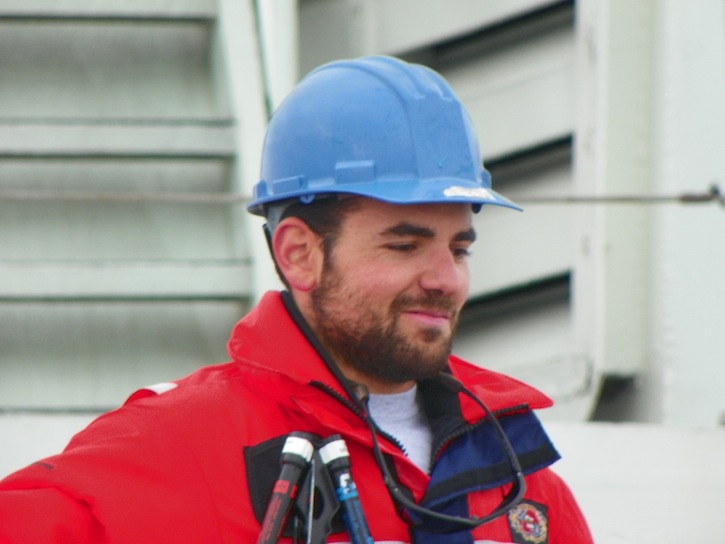 Mike Chretien, Third Mate on the Knorr, went to 5th and 6th grade at Morse Pond School. © Pat Keoughan
Mike Chretien, Third Mate on the Knorr, went to 5th and 6th grade at Morse Pond School. © Pat Keoughan 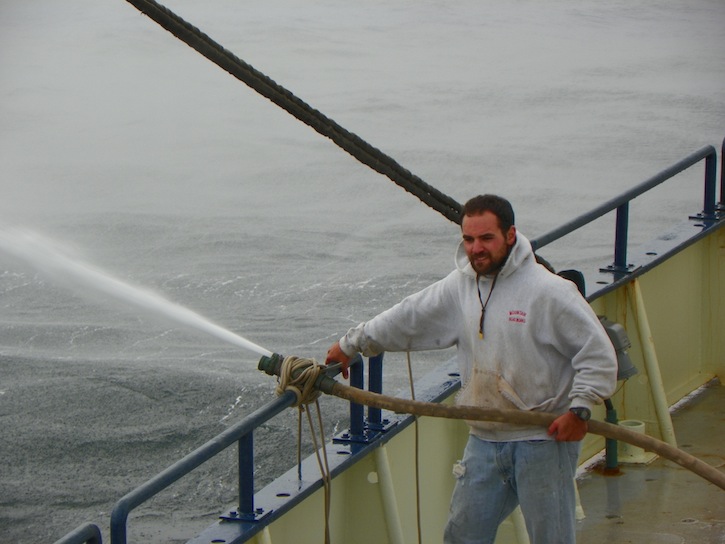
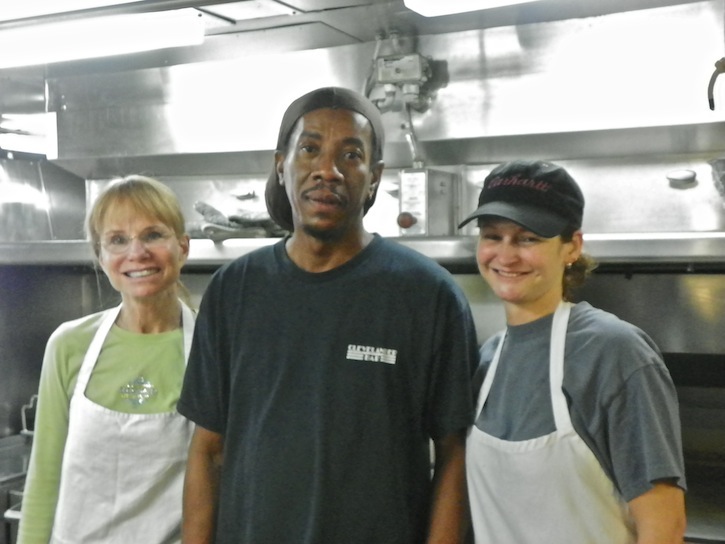
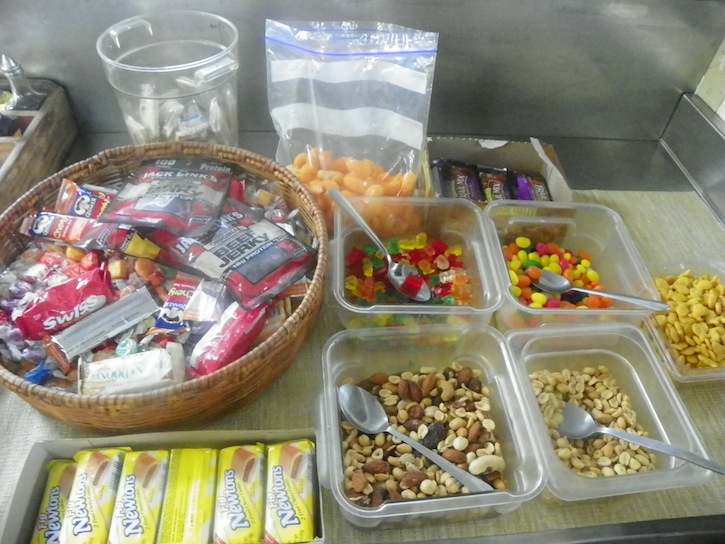
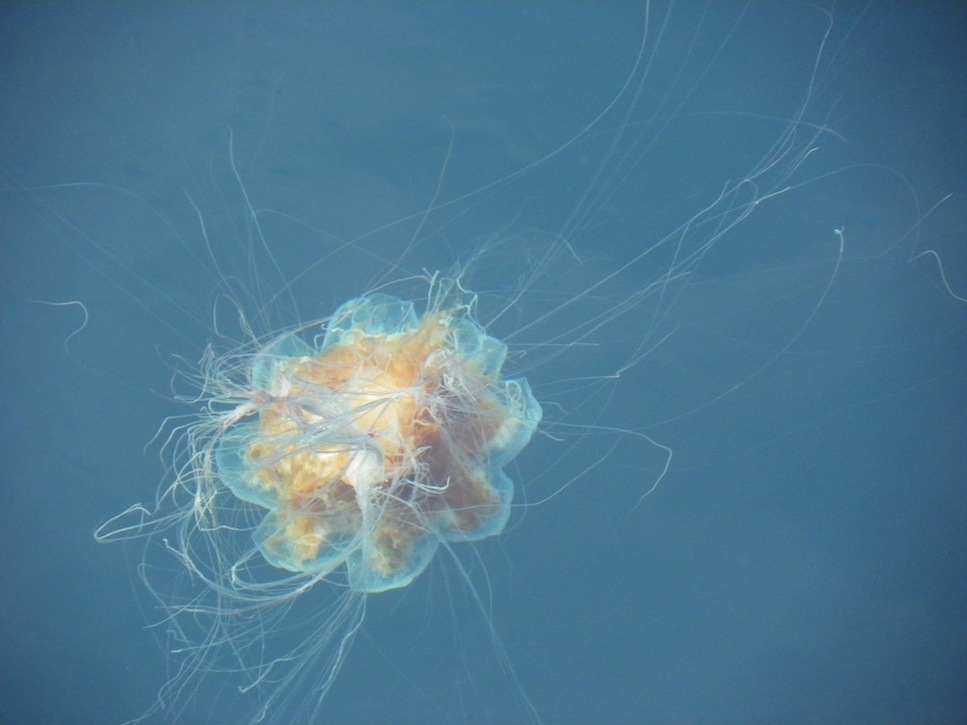
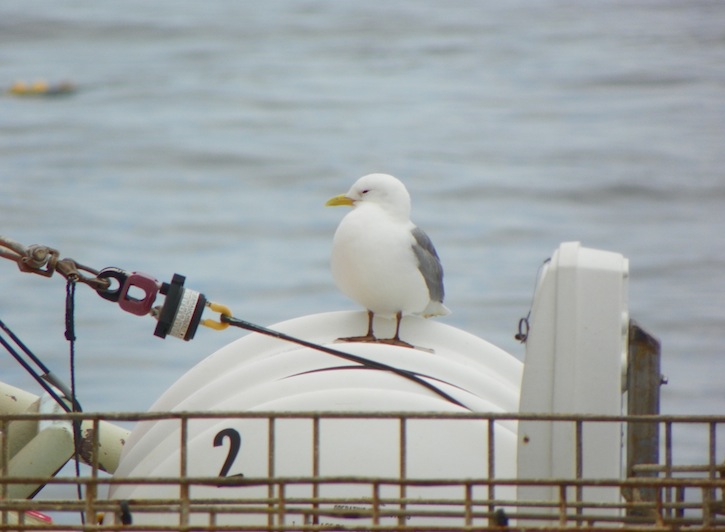
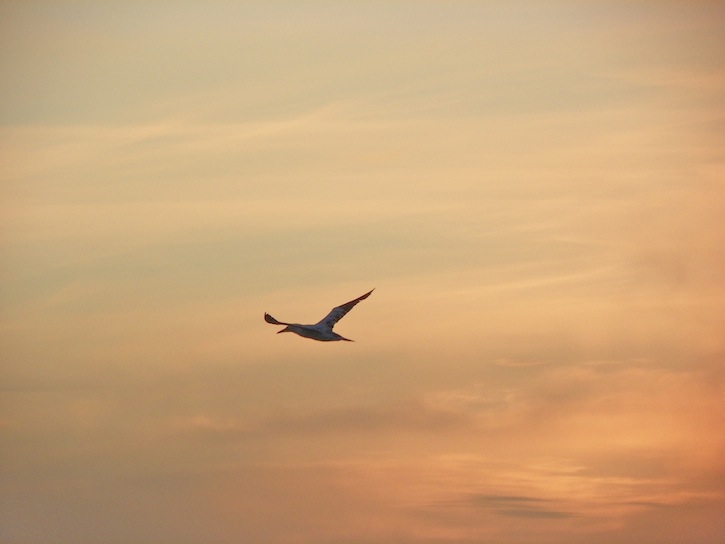
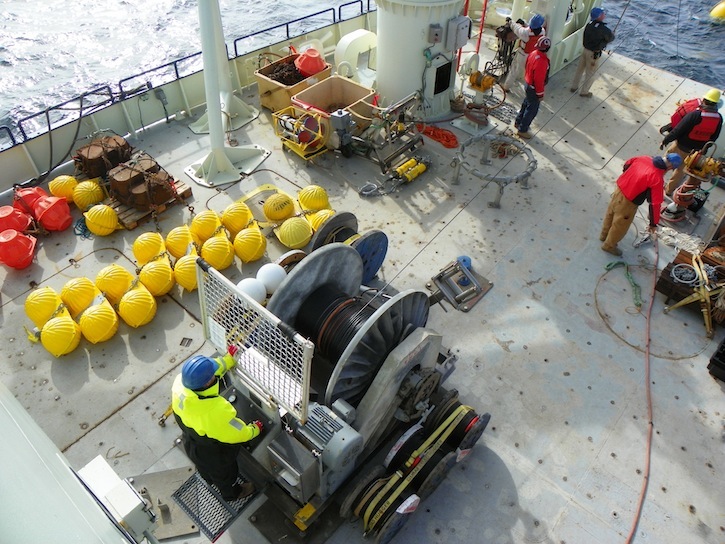 I learned quite a bit about deploying moorings. I had a spot to take photos on the deck above the fantail with a great view of the action. © Pat Keoughan
I learned quite a bit about deploying moorings. I had a spot to take photos on the deck above the fantail with a great view of the action. © Pat Keoughan 